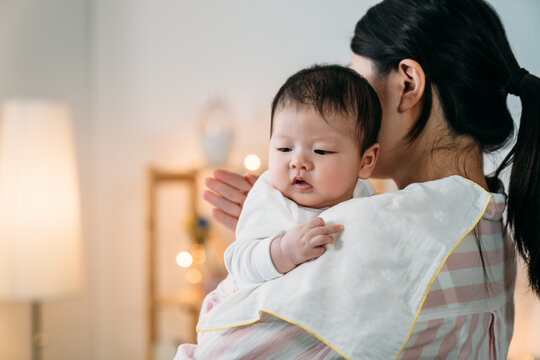How to Burp Your Baby: A Complete Guide?

Ensuring your baby burps properly is essential for their comfort and health. Cute as they may be, baby burps serve the important function of releasing trapped air from your baby’s stomach, preventing discomfort and making room for more milk. While some babies need frequent burping during feeds, others hardly need it at all. Here’s a comprehensive guide on how to effectively burp your baby.
How to Burp Your Baby: Different Methods
There are several techniques to help your baby burp. Try these methods to find the one that works best for you and your baby:
- Burping on Your Chest or Shoulder:
- Preparation: Place a cloth over your shoulder to protect your clothes from spit-up.
- Position: Hold your baby against your chest with their chin resting on your shoulder. Support their bottom with one hand and gently pat or rub their back with the other.
- Alternate Method: For babies with better head and neck control, hold them higher on your shoulder so that your shoulder presses lightly on their belly. Ensure they can breathe comfortably and aren’t slumped over too far. A quick check in the mirror can help ensure correct positioning.
2. Burping While Sitting on Your Lap:
- Preparation: Place a cloth bib on your baby or a cloth over your lap.
- Position: Sit your baby on your lap facing away from you. Support their chest with the palm of your hand, while your fingers gently support their chin and jaw. Lean your baby slightly forward and pat or rub their back with your other hand.
3. Burping Face-Down Across Your Lap:
- Preparation: Place a cloth over your lap.
- Position: Lay your baby face down on your legs, perpendicular to your body. Support their chin and jaw with one hand, ensuring their head is not lower than their body to avoid blood rushing to their head. Pat or rub their back with your other hand.
Also read: Baby Schedules: Why, When, And How To Start A Routine
Tips for Effective Burping
- Ensure your baby’s back is straight, not curled.
- Use firm but gentle pressure.
- Try circular rubbing motions as well as patting.
- If bottle-feeding, consider using bottles designed to reduce air intake, which may lessen the need for burping.
- Avoid positions that put pressure on the tummy if your baby tends to spit up frequently.
When to Burp Your Baby
- During Feeding: If bottle-feeding, burp your baby after every 2-3 ounces. If breastfeeding, burp when switching breasts.
- Signs of Discomfort: If your baby seems uncomfortable, pulls away, cries, or arches their back, it might be time to burp.
Why Burping Is Important
Burping helps prevent air from taking up space needed for milk in your baby’s small stomach, reducing gassiness and spit-up. It also helps avoid a cycle where discomfort from trapped air causes crying and swallowing more air.
Do Breastfed Babies Need to Be Burped?
Breastfed babies generally swallow less air than bottle-fed babies, often reducing the need for burping. However, babies who nurse quickly or become upset during feeding may still need to burp. Pay attention to your baby’s cues.
How Long to Burp Your Baby
- Most babies burp within a few minutes. If not, try a different position or gently rub their tummy and bicycle their legs.
- If your baby seems comfortable and hasn’t burped after a few minutes, they may not need to burp. Some babies rarely need burping and may fall asleep contentedly without it.
When to Stop Burping Your Baby
As your baby’s digestive system matures, typically around 4 to 6 months, they may swallow less air and need less burping. However, continue if you feel your baby still benefits from it.
By learning your baby’s unique burping needs and using the techniques that work best for you, you can help keep your baby comfortable and well-fed.
Also read: How To Ensure Your Baby Is Getting Enough Breast Milk?






